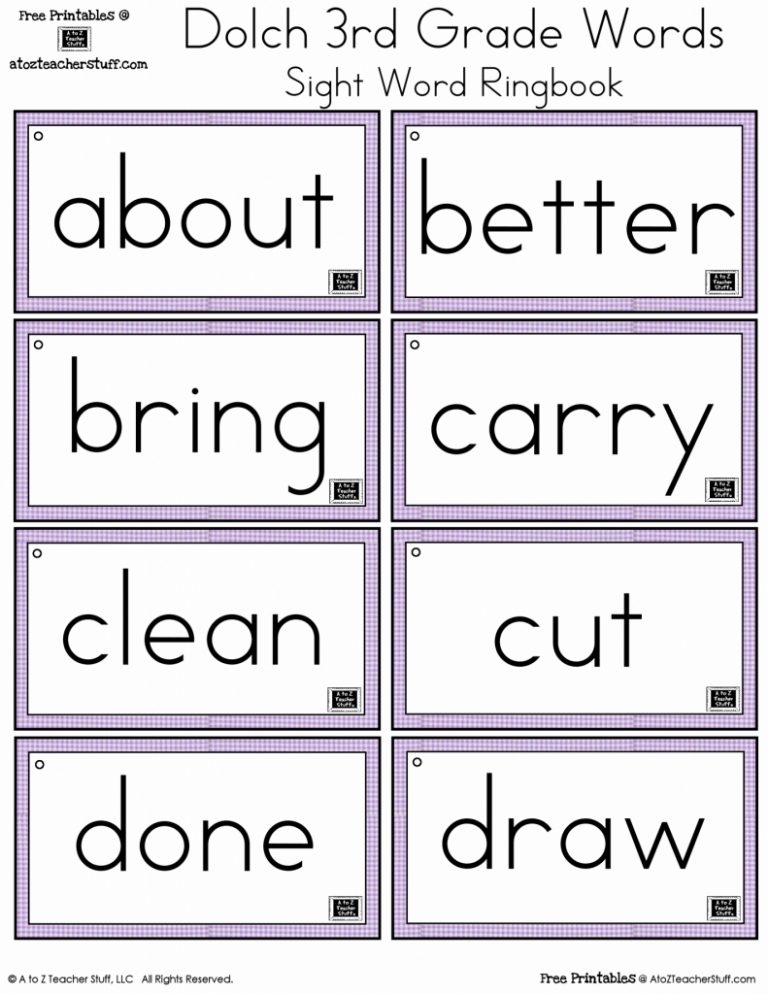
To use these flash cards, simply print them out (I recommend using card stock) and cut them into their individual cards. These Dolch Sight Words flash cards are easy to print at home and use to help your little one read. While there are rules to reading, including phonetic sounding out and the six-syllable rule, sight words do not follow these rules, making them more difficult to learn without practice. By the end of third grade, kids should be able to read nearly anything.

Reading is not only important for enjoying stories or deciphering warnings, but it also is imperative to be able to take in other word problems in math, science and more. For more information, please view our Disclosure page.Most children are expected to be able to read simple sentences and stories by the end of first grade, which will help set them up for every subject they will learn in the next years. There are 4 words to a page and some of the longer lists have a few pages to print out so I divided up the cards into grade: Pre-K // Kindergarten // 1st grade // 2nd grade // 3rd grade I also made flashcard sheets for you to use. I have put together a list of the Dolch sight words for grades Pre-K, Kindergarten, 1st grade, 2nd grade, and 3rd grade: Dolch Sight Word Lists But don’t forget to review the words that they have mastered! You can keep a stack of the mastered words and each morning review them before you move to the work-in-progress words. Once they are able to read and spell a word, you can move on to another. You can keep the flashcards that you are working on pinned to a pegboard on the wall, or on the fridge and throughout the day ask your child to read the card(s).Īfter they are able to easily recognize and read the word, you can then use the flashcard for “Spell Reading.” Ask your child to read the word, then say each letter of the word in order. Start by introducing no more than 3 new words using “See & Say.” Hold up one flashcard at a time and read the word several times while moving your finger under the word from beginning to end, then ask your child to do the same. I have had success with all 3 of my kids by using sight word flashcards. There are several ways to start introducing sight words into a child’s lessons. If a child’s recognition of the letter names is still shaky, you should first work on practicing this before jumping into sight words. When shown a letter, the child should be able to name it quickly and confidently. In fact, all of the words in Cat in the Hat are from the Dolch words list.īefore a child can start learning sight words, It’s important that they are able to recognize and name all the lower-case letters of the alphabet. Seuss book, then you’ve probably seen most of the words on this list. The Dolch list of words accounts for between 50-75% of all vocabulary found in grade school reading material. I started using the Dolch words for my oldest because it’s what our school used but I continued to use it when I learned it’s the most popular and widely used list. There are several lists of sight words that are commonly used – Dolch, Fry, Top 150, and Core Curriculum.

There are many ways you can achieve this but the most common ways are by using flashcards and word-focused games. The best way to learn sight words and increase a child’s familiarity with them is through repetition. By memorizing these common words by sight children will be able to read easier and faster. Learning sight words allows children to recognize words at a glance without needing to stop and sound out each individual word, letter by letter. They are sometimes referred to as “high-frequency words” because the list is comprised of the most common words that kids will encounter in each stage of reading. Sight words are widely used as a tool to help kids when they are learning to read and write.


 0 kommentar(er)
0 kommentar(er)
